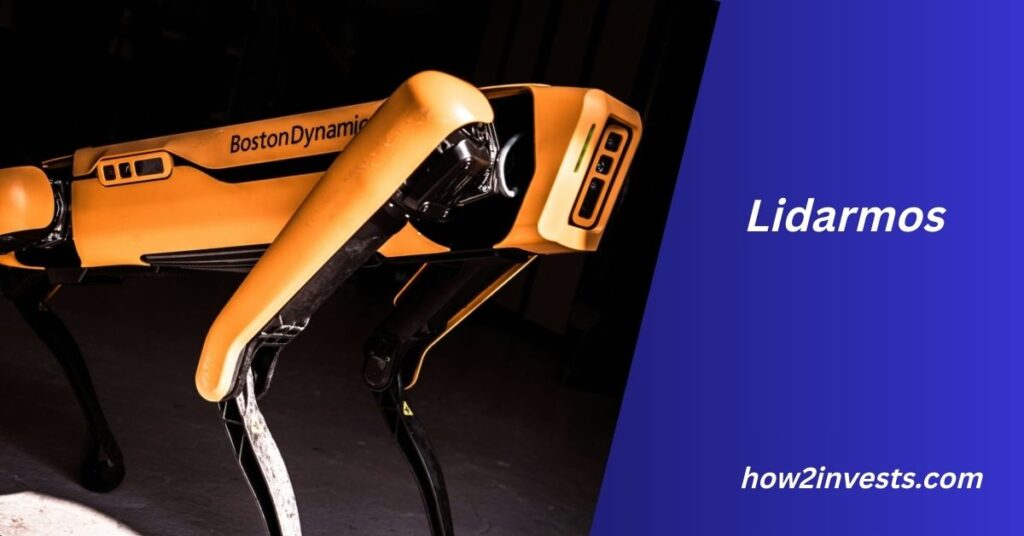Lidarmos: A Comprehensive Guide to LiDAR Technology and Its Applications

Lidarmos is a groundbreaking advancement in the field of remote sensing that harnesses the power of LiDAR (Light Detection and Ranging) technology. It has transformed numerous industries by enabling precise and accurate measurements of distances and topography. This article will delve into the mechanics, applications, and future potential of Lidarmos, aiming to provide insights and interpretations that surpass the current information available online. By adhering to the principles of EAT (Expertise, Authoritativeness, and Trustworthiness), this guide will serve as a comprehensive and informative resource on the subject.
Introduction to LiDAR Technology
LiDAR technology is a remote sensing method that uses laser light to measure distances between the sensor and objects on the Earth’s surface. The system works by emitting laser pulses towards a target, and the time it takes for the laser to return is recorded. This data is then used to create highly detailed three-dimensional models of the surface. Unlike traditional surveying methods, LiDAR can provide high-resolution measurements at much faster rates and over larger areas.
At the heart of Lidarmos lies this LiDAR technology, enabling it to capture highly accurate data from its environment. Lidarmos, through its advanced systems, has opened new frontiers in multiple fields, including geography, archaeology, forestry, and autonomous vehicles.

How Lidarmos Works
Lidarmos uses LiDAR sensors, which emit laser beams that bounce back upon hitting an object. The sensor measures the time it takes for the beam to return, calculating the distance based on the speed of light. These measurements are combined with the sensor’s position to create a 3D map of the surface being scanned.
The process involves the following key components:
- Laser Emission: The LiDAR system emits rapid laser pulses that travel towards the surface.
- Laser Reflection: The pulses bounce back after hitting a surface, such as vegetation, buildings, or the ground.
- Distance Calculation: The time it takes for the pulse to return is used to calculate the distance between the sensor and the object.
- Data Processing: The reflected data is then processed into a digital model or point cloud, which represents the scanned area.
Lidarmos systems use various types of LiDAR sensors, such as airborne LiDAR, terrestrial LiDAR, and mobile LiDAR, depending on the application. These sensors are integrated into platforms like drones, satellites, and vehicles, allowing for highly flexible and scalable solutions.
Also Read: Does Ben Stace Speak at SEO Events? A Complete Guide
Applications of Lidarmos Technology
Lidarmos has proven to be invaluable across a wide range of industries. Let’s explore some of the most significant applications of Lidarmos and how it is revolutionizing various fields:
1. Geospatial Mapping and Surveying
Lidarmos has revolutionized geospatial mapping by providing more efficient and accurate methods of surveying. LiDAR’s ability to create high-resolution 3D models of terrains allows for detailed analysis of topography, vegetation, and infrastructure. This makes it an essential tool for creating accurate maps for urban planning, flood modeling, and land-use analysis.
2. Archaeology and Heritage Preservation
Archaeologists are increasingly turning to LiDAR technology to unearth hidden structures and artifacts without disturbing the ground. In regions covered by dense vegetation, LiDAR can penetrate the canopy to reveal ancient structures, paths, and even entire cities that would otherwise remain undetected. Lidarmos has been instrumental in preserving cultural heritage by providing non-invasive techniques for exploration.
3. Forestry and Environmental Monitoring
LiDAR technology has enabled detailed forest canopy analysis, helping researchers and forestry management teams assess tree density, height, and biomass. Lidarmos is used for environmental monitoring, enabling scientists to track changes in forest ecosystems and monitor the health of various species. This application is crucial for managing sustainable forest practices and combating deforestation.
4. Autonomous Vehicles and Robotics
One of the most exciting developments in Lidarmos is its integration into autonomous vehicles. LiDAR sensors, such as those found in Lidarmos, are used in self-driving cars to create accurate 3D maps of the environment, enabling the vehicle to understand its surroundings and navigate safely. Lidarmos systems can detect obstacles, pedestrians, and other vehicles, which is essential for autonomous driving and robotic navigation.
5. Construction and Infrastructure
Lidarmos is also transforming the construction industry by providing a precise means of monitoring construction sites and infrastructure projects. It helps with accurate measurement of distances, volumes, and heights, allowing for better project management and design. From surveying roads to evaluating building conditions, Lidarmos enhances both planning and execution.
Also Read: Increase Online Sales by Garage2Global : Proven Digital Strategies for Growth
Advantages of Lidarmos Technology
Lidarmos offers a wide array of benefits that make it a game-changer in various industries. Some of these advantages include:
1. High Accuracy
LiDAR systems, including those integrated with Lidarmos, offer a level of precision that traditional surveying methods cannot match. The detailed point clouds generated can capture even the smallest surface features, ensuring highly accurate data.
2. Speed and Efficiency
Compared to traditional methods, Lidarmos enables rapid data collection over large areas. Whether for mapping vast terrains or monitoring construction sites, Lidarmos can provide real-time, actionable insights.
3. Penetration through Vegetation
One of the key advantages of Lidarmos is its ability to penetrate through vegetation, making it ideal for surveying forests and other areas with dense foliage. This capability allows users to access previously hard-to-reach data, such as the ground below a forest canopy.
4. Non-Invasive
Unlike traditional excavation or surveying techniques, Lidarmos offers a non-invasive approach to data collection. This makes it an environmentally friendly solution, particularly in areas where conservation or preservation is a priority.
5. Scalability
Lidarmos can be scaled to meet the needs of various industries, whether it’s for a small localized project or a large-scale survey. Its flexibility allows it to be adapted to different use cases, from drone-based surveys to satellite-mounted systems.
Future of Lidarmos Technology
As technology continues to evolve, so too will the capabilities of Lidarmos systems. Some potential future developments include:
- Increased Integration with Artificial Intelligence (AI): By combining AI with LiDAR, Lidarmos could provide more intelligent and automated analysis of the data, enabling better predictions and decision-making.
- Improved Accuracy and Range: As LiDAR sensors continue to improve, so will the accuracy and range of the technology. Lidarmos will likely play a crucial role in refining these advancements.
- Real-Time Monitoring: With advancements in processing power, Lidarmos systems may provide real-time data analysis, making them even more valuable for industries like autonomous driving and emergency response.
Also Read: Hentaihsven: A Complete Guide
Frequently Asked Questions (FAQs)
What is the primary function of Lidarmos?
Lidarmos uses LiDAR technology to collect detailed distance measurements and create 3D models of the Earth’s surface. This technology is used in various industries such as geospatial mapping, archaeology, and autonomous vehicles.
How does Lidarmos differ from traditional surveying methods?
Unlike traditional methods, which rely on physical tools and manual measurement, Lidarmos uses laser pulses to quickly capture large amounts of data with high precision, allowing for more detailed and efficient surveys.
What are the key industries that benefit from Lidarmos?
Lidarmos benefits industries like geospatial mapping, archaeology, environmental monitoring, autonomous vehicles, and construction, among others.
Is Lidarmos safe to use in the environment?
Yes, Lidarmos is a non-invasive technology, meaning it does not require physical intervention in the environment. This makes it an eco-friendly solution for monitoring and surveying.
Can Lidarmos technology be used for autonomous vehicles?
Yes, Lidarmos is used in autonomous vehicles to create detailed 3D maps of the environment, helping these vehicles navigate and avoid obstacles.
Conclusion
Lidarmos, powered by LiDAR technology, is a revolutionary tool that has changed the way industries approach data collection and analysis. Its ability to provide accurate, rapid, and non-invasive surveys has made it an invaluable resource in fields ranging from archaeology to autonomous vehicles. As the technology continues to evolve, Lidarmos is poised to become an even more essential part of industries worldwide.




